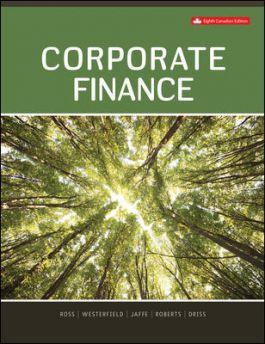Dickinson Company has $11,880,000 million in assets. Currently half of these assets are financed with long-term debt at 9.4 percent and half with common stock having a par value of $8. Ms. Smith, Vice-President of Finance, wishes to analyze two refinancing plans, one with more debt (D) and one with more equity (E). The company earns a return on assets before interest and taxes of 9.4 percent. The tax rate is 40 percent. Tax loss carryover provisions apply, so negative tax amounts are permissable.
| Under Plan D, a $2,970,000 million long-term bond would be sold at an interest rate of 11.4 percent and 371,250 shares of stock would be purchased in the market at $8 per share and retired. |
| Under Plan E, 371,250 shares of stock would be sold at $8 per share and the $2,970,000 in proceeds would be used to reduce long-term debt. |
| a. | How would each of these plans affect earnings per share? Consider the current plan and the two new plans. (Round your answers to 2 decimal places.) |
| Current Plan | Plan D | Plan E |
| Earnings per share | $ | $ | $ |
| |
| b-1. | Compute the earnings per share if return on assets fell to 4.70 percent. (Leave no cells blank - be certain to enter "0" wherever required. Negative amounts should be indicated by a minus sign. Round your answers to 2 decimal places.) |
| Current Plan | Plan D | Plan E |
| Earnings per share | $ | $ | $ |
| |
| b-2. | Which plan would be most favorable if return on assets fell to 4.70 percent? Consider the current plan and the two new plans. |
| |
| | Plan E | | Plan D | | Current Plan | |
| b-3. | Compute the earnings per share if return on assets increased to 14.4 percent. (Round your answers to 2 decimal places.) |
| Current Plan | Plan D | Plan E |
| Earnings per share | $ | $ | $ |
| |
| b-4. | Which plan would be most favorable if return on assets increased to 14.4 percent? Consider the current plan and the two new plans. |
| |
| | Current Plan | | Plan D | | Plan E | |
| c-1. | If the market price for common stock rose to $12 before the restructuring, compute the earnings per share. Continue to assume that $2,970,000 million in debt will be used to retire stock in Plan D and $2,970,000 million of new equity will be sold to retire debt in Plan E. Also assume that return on assets is 9.4 percent. (Round your answers to 2 decimal places.) |
| Current Plan | Plan D | Plan E |
| Earnings per share | $ | $ | $ |
| |
| c-2. | If the market price for common stock rose to $12 before the restructuring, which plan would then be most attractive? |
| |
| | Plan E | | Current Plan | Plan D | |






